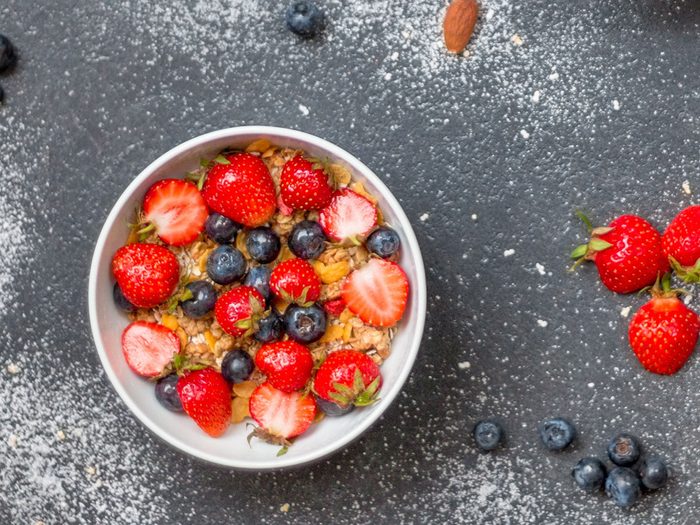
The Healthiest Foods Can Be Found at the Local Grocery Store
I first read about acai berries and goji berries a couple of years ago. Originating in South American rainforests and remote northern China, respectively, they were praised for their high concentrations of disease-fighting antioxidants. I found a health food store that carried the dried berries, and bought a small (200 g) package of each – at about eight euros apiece.
My husband and I would have a few a day, and soon had to buy more. I wondered whether their purported health benefits were worth the money, and after some research discovered that blueberries, fresh or frozen—widely available and about half the price—are one of the best sources of antioxidants we have.
Buzzworthy foods are forever making headlines. We’re now hearing about the wonders of teff (an Ethiopian grain), maca powder (Peruvian ginseng), yacon root syrup (from the Andes), and tree water. Sure, they may be good, even great, for you. But the healthiest foods have been in the supermarket all along—with modest price tags, and backed by research proving they’re healthy. Enjoy these as part of a balanced diet that includes whole grains and vegetables.
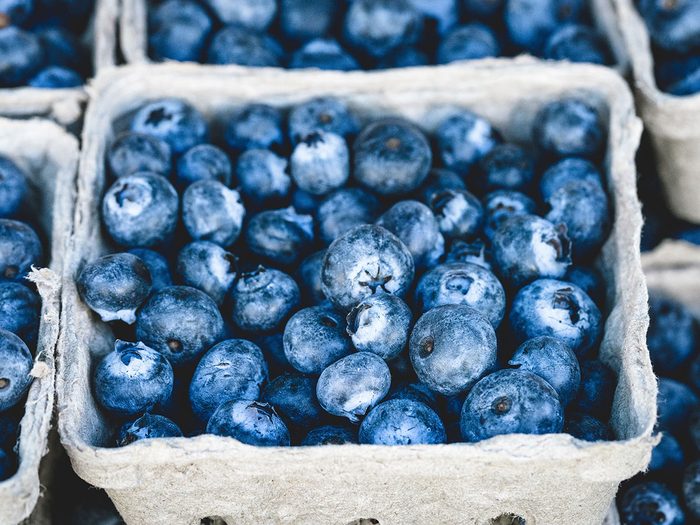
Blueberries
Cell damage due to oxidation has been linked to cancer and other diseases. Since blueberries have more antioxidants than most fruits, “they could prevent oxidative cell damage,” suggests Sarah Schenker, a London registered dietitian and author. Strawberries and red grapes also contain high levels of antioxidants.
Blueberries are heart-healthy, thanks to anthocyanins, which give berries their colour. A 2015 study published in the U.S.-based Journal of the Academy of Nutrition and Dietetics had 48 post-menopausal women in the early stages of hypertension consume either a freeze-dried blueberry powder equivalent to a cup of fresh blueberries, or a placebo, for eight weeks. The blood pressure of those who ate the blueberry powder was significantly lowered.
Sarah A. Johnson, an assistant professor of food science and human nutrition at Colorado State University, was lead author. “Although more research is needed, our results suggest that, for women with hypertension, eating at least a daily cup of blueberries can be just as effective as medications for lowering blood pressure,” she says. She adds that other studies show blueberries may lower blood pressure in men.
Earlier, a British study concluded that, of some 93,000 women between ages 25 and 42 were followed for 18 years, those who ate at least three half-cup servings a week of mixed blueberries and strawberries were 34 percent less likely to have suffered a heart attack.
“As a registered dietician, I’d say adding any amount of blueberries to the diet would be healthful,” says Johnson. Schenker recommends frozen blueberries so you can enjoy them year-round. “They’re usually as nutritious as fresh,” she says.
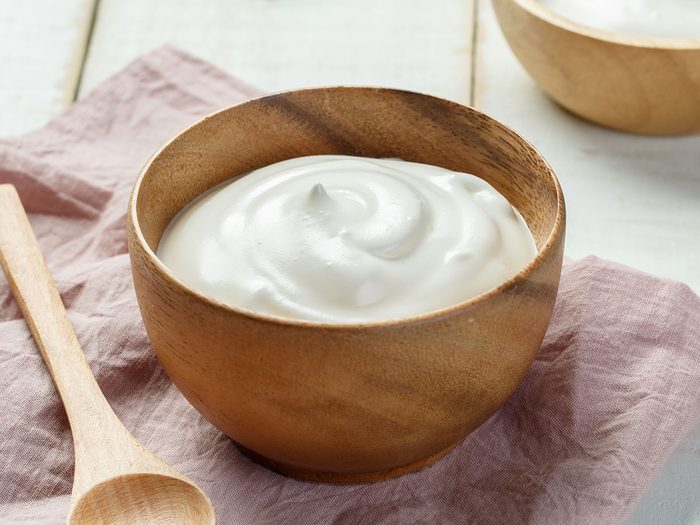
Kefir
Kefir is not only packed with bone-building calcium, but a 2016 study published in the Swiss journal Frontiers in Microbiology indicates it can lower cholesterol, boost immunity and prevent allergy development. “More research is needed to ensure these benefits are seen in humans, but kefir is potentially one of the healthiest foods,” says molecular biologist Paul Cotter, who led the study. He is principal research officer with Teagasc, Ireland’s agriculture and food development authority and a world leader in food science.
The dairy product is probiotic, meaning it contains healthy microbes, or bacteria, and has long been thought to have multiple health benefits, including being anti-inflammatory. These assumptions are now being proven, thanks to a revolution in the past 15 years in gut microbiology, with new DNA technologies providing better insights. “Healthy gut microbes, which kefir contains in large amounts, can kill disease-causing microbes, develop the immune system, impact our mood, cognition, gastrointestinal health…the list goes on,” says Cotter. (Here’s what else probiotics can do for you.)
Kefir isn’t as thick as yogurt, tastes tangier and typically contains a larger variety of bacteria. “In most yogurts, the bacteria types are commonly all Streptococcus thermophilus and Lactobacillus bulgaricus, of which health properties are not very well known,” says Cotter. “Kefir has a wider range of microorganisms, including Lactobacillus kefirinofaciens, which has clearer health-promoting properties.”
Choose plain kefir, and if you want sweetness, stir in some honey. Says Claudia Thienel, a certified nutritionist in Bonn, “A kefir breakfast smoothie made with raspberries, banana and finely ground oatmeal is particularly tasty.”
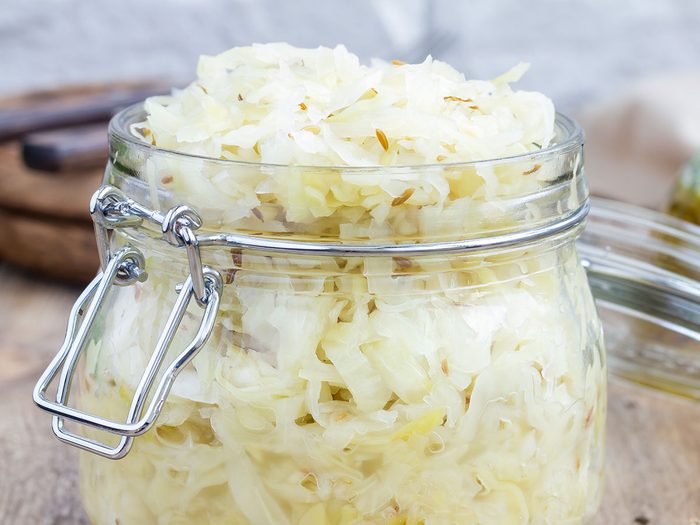
Sauerkraut
Generations of Europeans, particularly in eastern and northern Europe, have eaten raw fermented cabbage to promote digestion. Like kefir, it is probiotic and therefore anti-inflammatory. In recent years, many studies have backed up sauerkraut’s anti-inflammatory benefits, due to its abundance of gut-friendly flora. “It provides positive bacteria,” says Thienel. (Did you know Sauerkraut is also good for your vagina?)
There’s now a connection between sauerkraut and cancer prevention. A Polish study on rats, published in the U.S.-based Nutrition and Cancer, showed that consuming cabbage and sauerkraut slowed the metabolism of estrogen, a hormone that can promote breast cancer cell growth. This backs up research earlier, when Polish and American researchers studies hundreds of young female Polish immigrants to the U.S. They ate about 10 pounds of raw and lightly cooked sauerkraut a year and had a breast cancer rate three times higher than women in Poland who ate an average of 30 pounds a year.
“Try sauerkraut with pineapple; the sweet and sour flavours taste really nice,” suggest Thienel. Look for the fresh, raw type sold in the refrigerated section, or, better yet, make your own.
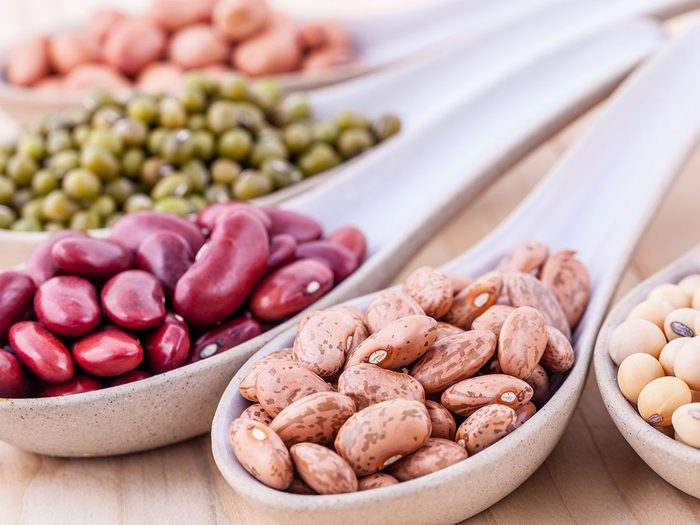
Beans
Also called legumes and pulses, these include lentils, kidney beans, black beans, chickpeas and many others. Dietitians say they are a perfect balance of fibre, protein and complex carbohydrates. Plus, a 2016 study from Sorbonne University in Paris, published in British Journal of Nutrition, found that dietary fibre such as that in beans lowered prostate cancer risk.
Because beans are a very good source of protein, you can use them to reduce your meat consumption; theWorld Health Organization warned back in 2015 that red and processed meats may increase rates of several cancers, including colorectal. That’s the world’s third most common cancer; 13 of the 20 countries with the highest rates are European. “Replace some of the meat with beans in soups and stews,” suggests Sarah Schenker.
“Beans release their energy slowly, which is good for blood-sugar levels and appetite control, so they help with weight management,” she says. And they’re cheap; you can buy them tinned or dried; and you can enjoy them as dips, such as hummus. “Don’t ignore beans,” says Schenker. “Go down that aisle in the supermarket.”
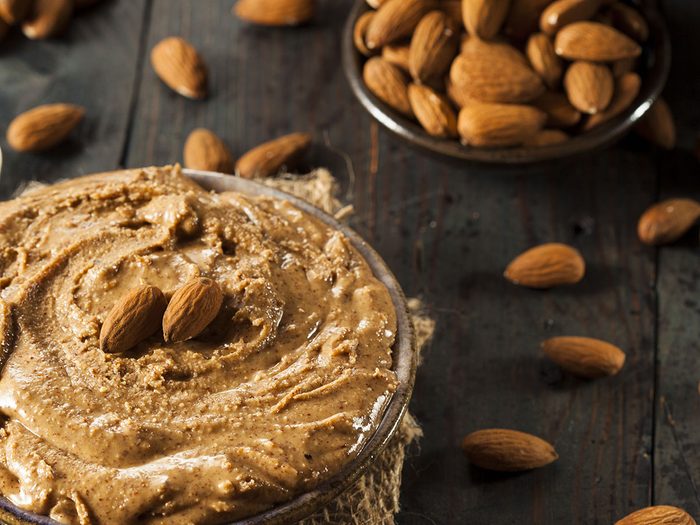
Nuts
These nutritious powerhouses are a staple of the Mediterranean diet, which has bee linked to longevity. One of their best qualities? “Nuts can prevent some cardiovascular diseases,” says Ellen Kampman, a professor of nutrition at Wageningen University in the Netherlands. Kampman helped develop the recently updated Dutch Dietary Guidelines, which recommend a handful of unsalted nuts daily.
That recommendation is reinforced by research from the UK and Norway showing that, compared with people who didn’t eat nuts, those who ate 28 grams (a handful) a day cut their coronary heart disease risk by nearly 30 percent. The reason? Nuts and nut butters are a great source of unsaturated fats that help lower blood cholesterol.
When it comes to nut butters, choose all-natural, with no added sodium or sugar. And for a tasty snack or topping for salads and rice dishes, brown nuts briefly in a pan with soy sauce, suggests Thienel.
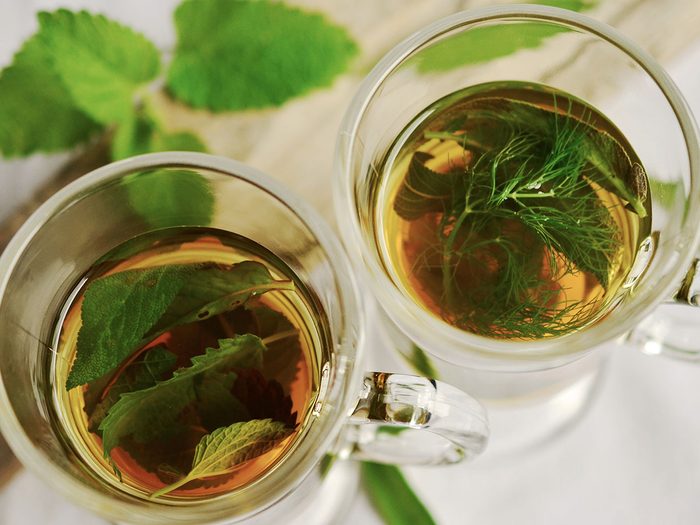
Green Tea
A Japanese study of about 90,000 people over 10 years, published in Cancer Science, found that those who drank lots of green tea had lower risks for certain cancers, including gall bladder and bile duct. A type of polyphenol antioxidant that’s abundant in green tea may be the reason.
Green tea has also been linked to brain health. A lab study by the University of Basel, published in European Journal of Clinical Nutrition, showed evidence green tea boosted activity in the part of the brain responsible for working memory, which tends to decline with age.
Green tea may have more of the beneficial polyphenols than black tea does, but both types are good for you, Says Schenker, “They have among the highest concentrations of polyphenols found in any plant.” Both are proven to help prevent cardiovascular disease. That’s why the Dutch Dietary Guidelines recommend drinking tea, says Kampman.
“For something different, enjoy it as iced tea, with fresh mint and maybe sliced fruit,” Thienel suggests.
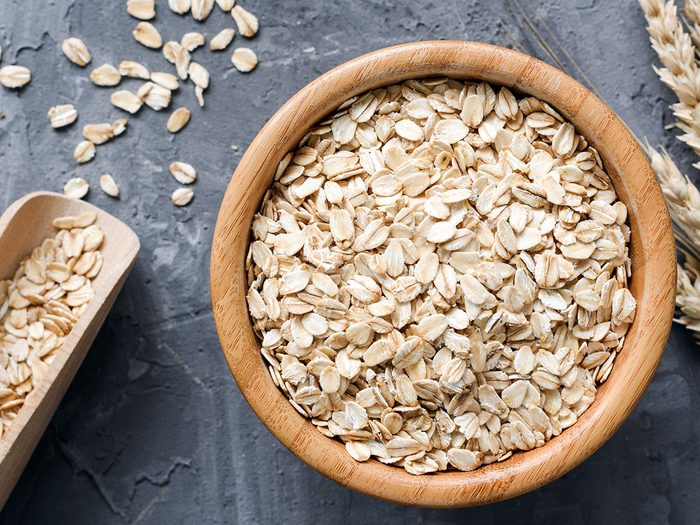
Oats
It’s not news that oats lower LDL (“bad”) cholesterol levels, boosting heart health. LDL cholesterol sticks to blood vessel walls and can cause blockages of clots.
A British Journal of Nutrition study review shows oats are even better for cholesterol than thought. Researchers at the University of Toronto looked at 58 clinical trials involving nearly 4,000 people globally and found that oats—whether instant, quick-cook or coarse—lowered not only LDL cholesterol but non-HDL (total cholesterol minus the health HDL kind) and apoB (a lipoprotein that carries bad cholesterol through the blood).
Vladimir Vuksan, a professor of medicine who led the research, says these benefits came from eating 3.5 grams a day of beta glucan, a soluble fibre in the oat’s bran. Vuksan says it would be difficult to consume that much beta glucan by eating oatmeal alone. One cup of cooked oatmeal has about 1.5 grams of the fibre, so you’d need more than two cups of oatmeal—not a good idea due to oats’ carbohydrate content (a diet high in carbs can cause blood sugar spikes). “So simply add oat bran to foods,” he says. It’s widely available; you can sprinkle it over soups, salads or cereals and bake with it.
When making oatmeal, says Sue Mah, a registered dietitian in Toronto, “Use steel-cut or quick-cooking oats. Those types are slower to raise blood sugar than instant oats.” You can boost the fibre content by adding nuts or seeds and fresh fruit, she added. Or, try our healthy homemade cereal.
Of course, no single food is a magic bullet. Says Dr. Yoni Freedhoff, an Ottawa-based medical doctor and author, “To me, ‘superfoods’ are balanced meals you’ve cooked from fresh ingredients and then enjoyed, ideally, around a table with family.”
Now that you’ve learned about the best power foods to keep in your pantry, see why you might want to also keep cricket powder in it.
